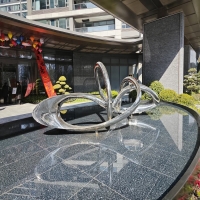Welcome to the website for landscape facilities products and knowledge.
How does the table’s design accommodate the use of robotic or automated assistants?
Modern table designs are undergoing revolutionary changes to accommodate robotic and automated assistants in various environments. The integration begins with height-adjustable mechanisms that allow tables to dynamically position themselves at optimal levels for different robotic models, ensuring proper alignment and operational efficiency. These intelligent surfaces often incorporate weight distribution systems capable of supporting heavy robotic arms while maintaining perfect stability during complex tasks.
Embedded sensor technology represents another critical adaptation, with tables featuring pressure sensors, proximity detectors, and connectivity ports that enable real-time communication between the table surface and robotic systems. This allows automated assistants to recognize table boundaries, detect object placements, and adjust their movements accordingly. The inclusion of dedicated charging stations and power management systems within table structures ensures continuous operation without cumbersome external cables.
Cable management has evolved significantly, with hidden channels and automated retraction systems that prevent entanglement with robotic components. Table surfaces now utilize specialized materials resistant to scratches, chemicals, and repeated impact from robotic tools, while maintaining aesthetic appeal for human users. The strategic placement of interface panels and control systems allows both human operators and robotic assistants to interact with the table's features seamlessly.
Many advanced tables incorporate modular designs where specific sections can be reconfigured or replaced to accommodate different robotic tools or work processes. This flexibility enables the same table to serve multiple purposes throughout the day, transitioning between manufacturing, inspection, and collaborative tasks. The integration of IoT capabilities further enhances this adaptability, allowing tables to communicate with building management systems and coordinate with multiple robotic assistants simultaneously.
Edge protection and safety features have become standard, with raised borders that prevent objects from falling while providing additional structural support. These designs consider the unique visual requirements of robotic vision systems, incorporating color contrasts and pattern markers that help automated assistants with spatial orientation and object recognition. The result is a harmonious workspace where human creativity and robotic precision coexist efficiently, transforming how we approach tasks in laboratories, manufacturing facilities, and smart offices worldwide.
Related search:

Recommendation
Abstract art sculpture, stainless steel metal sculpture, large-scale water feature sculpture